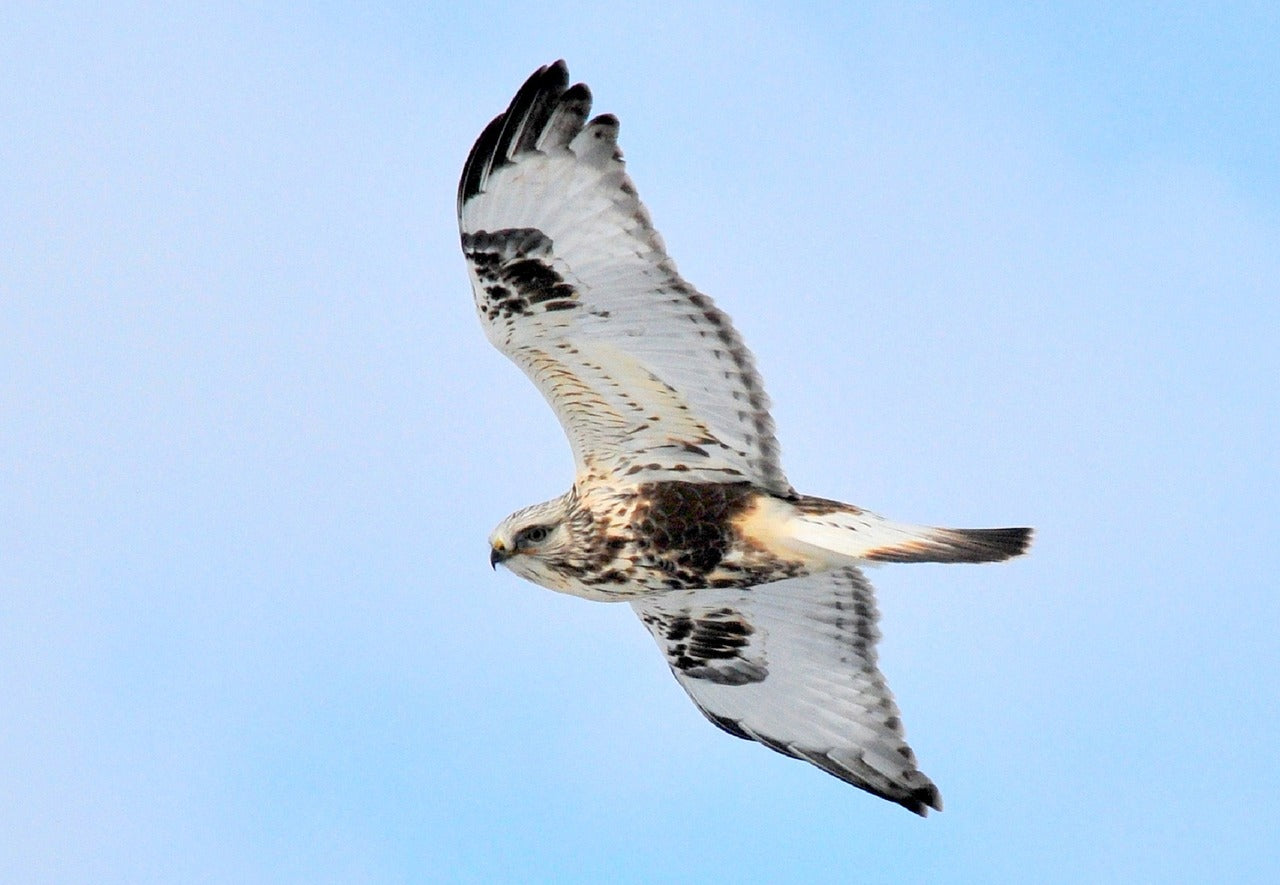Offer
Provide additional details about the offer you're running.
Provide additional details about the offer you're running.
Provide additional details about the offer you're running.

This week we’re featuring the stunning Rough Legged Hawk. While this bird spends most of its time in the arctic it can be found in this area during migration. Mainly residing along large bodies of water and fields. They can be spotted from their boldly patterned plumage and large broad wings and can most commonly be found hovering over fields searching for their prey.
If you’re looking to spot this wonderful raptor, continue reading for details on where and how to identify them both physically and vocally.
The Rough Legged Hawk can easily be identified by their boldly patterned plumage and unique feathers running down their legs, which happen to be how they received their name. The boldly patterned plumage can vary in colour between light morphs, dark morphs, females and males. Light morphs have a pale underwing with dark patches only at the bend of the wing. Dark morphs are mostly dark brown in colour however, usually have pale trailing edges to their underwing. Females have pale heads and dark belly patches, whereas a males pattern is more marbled.
We now know a Rough Legged Hawk can vary in plumage however, their large size is fairly similar across the board. These majestic birds have broad wings with a swept back wingtip with a slight unique M shape, also making them easier to identify.
Being one of the only five North American raptors that are completely migrant, they spend the winter months in southern parts of Canada and USA, mostly found along large bodies of water such as the Great Lakes. Similarly they can also be found roaming along river valleys, specifically those that are parallel to migration routes.
Unlike other raptors you can typically find Rough Legged Hawks perched onto poles, fences, in the high tops of trees or on the ground.
Typically their sounds are loud or soft whistles. Interestingly, nesting adults have a different sound than courting birds. The nesting adults have a loud mew when alarmed that is repeated approximately every 15 seconds for only a second at a time. Whereas, courting birds have a whistle that will fade to a hiss.
High Quality Blend